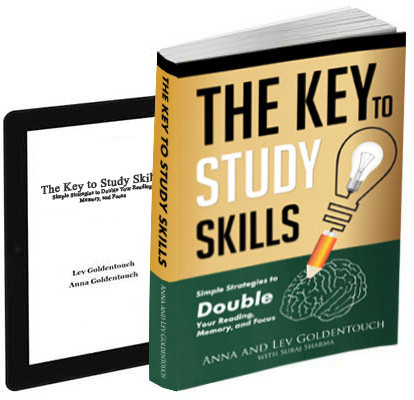The question of whether schools kill creativity is a topic of intense debate and concern in educational circles. As society progresses and the demand for innovative thinking in professional fields increases, the role of education in fostering or stifling creativity becomes increasingly relevant. This article explores various dimensions of how traditional schooling might impact creativity, supported by expert opinions, psychological studies, and current educational practices.
Understanding Creativity
Definition and Importance
Creativity involves the ability to transcend traditional ideas, rules, patterns, and relationships to create meaningful new ideas, forms, methods, and interpretations. It is not limited to artistic expression but is crucial in problem-solving and science, driving innovation and progress.
Measuring Creativity
Measuring creativity can be challenging as it encompasses various aspects like fluency, originality, and elaborative skills. Traditional tests may not capture the essence of someone’s creative potential, leading to an undervaluation of this skill in educational settings.
Traditional Schooling and Creativity
Standardized Curriculum and Testing
The core structure of most educational systems is built around standardized curricula and testing. This approach often prioritizes memorization and conformity over creative thought, which can stifle students’ ability and motivation to think divergently.
Teacher-Centered Pedagogy
In many educational settings, a teacher-centered approach dominates, where teachers impart knowledge and students receive it passively. This method leaves little room for students to explore topics creatively and can diminish their engagement and intrinsic motivation.
The Role of Teachers in Nurturing Creativity
Changing Roles
Teachers play a pivotal role in either nurturing or stifling creativity. Educators who encourage questions, foster a safe environment for making mistakes, and support divergent thinking can significantly boost creativity among students.
Examples of Creative Teaching Strategies
Interactive learning strategies, such as problem-based learning, open-ended projects, and collaborative group work, can help foster creativity by allowing students to engage directly with learning materials and each other.
Impact of Technology on Creativity in Schools
Digital Tools and Creativity
Technology, when integrated thoughtfully, can enhance creative learning through tools that offer students novel ways of information processing and presentation. Apps and software that support brainstorming, mind-mapping, and digital art provide avenues for creative expression.
The Double-Edged Sword
However, the misuse of technology can also hinder creativity, leading to distractions and reducing face-to-face interactions, which are crucial for developing critical thinking and interpersonal skills.
Case Studies and Success Stories
Alternative Schools
Montessori, Waldorf, and other alternative schools often prioritize creativity. These institutions typically focus on hands-on learning, student-chosen projects, and cooperative learning models that nurture creativity and innovation.
Reforming Public Schools
Some traditional schools have successfully integrated creativity into their curricula by adopting flexible schedules, multidisciplinary courses, and project-based learning, showing that creativity and standard education can coexist.
Psychological Perspectives on Creativity
Cognitive Development and Creativity
Psychologists suggest that creativity involves cognitive processes that schools can nurture. These include associative thinking, metaphorical thinking, and the ability to see problems from multiple perspectives.
The Role of Environment
A supportive, enriching environment is critical for creativity. Schools that provide diverse materials, foster curiosity, and allow for intellectual risks promote the development of creative capacities in students.
Strategies for Enhancing Creativity in Schools
Curriculum Integration
Incorporating creativity into the curriculum doesn’t necessarily mean overhauling it completely. It can start with integrating creative tasks into existing subjects, such as writing assignments in literature that encourage unique perspectives or integrating art into science projects to illustrate complex concepts visually.
Role of Assessments
To foster creativity, the assessment methods must also evolve. Instead of relying solely on standardized tests, educators can employ portfolios, peer assessments, and project-based evaluations that offer students the opportunity to showcase their creative capabilities.
Role of School Leadership in Promoting Creativity
Policy and Vision
School leaders have a critical role in shaping the educational approach towards creativity. By setting a vision that values and prioritizes creativity, school administrators can influence the entire school culture, encouraging teachers and students to think innovatively.
Professional Development
Investing in professional development for teachers on how to nurture creativity and implement innovative teaching methods is essential. Workshops, seminars, and collaborative teaching strategies can empower teachers to transform their classrooms into environments rich in creativity.
Challenges to Creativity in Schools
Resource Constraints
Often, schools face budget and resource constraints that limit their ability to implement creative learning tools and methods. Finding cost-effective solutions and allocating resources wisely is crucial for fostering an environment that supports creative development.
Resistance to Change
Resistance from educators, parents, and even policy makers can be a significant barrier to implementing creative practices in schools. Addressing these concerns through dialogue and demonstrating the effectiveness of creative educational practices are vital steps toward broader acceptance.
Community and Parental Involvement
Building Partnerships
Strong partnerships between schools and communities can enhance creative opportunities for students. Involving local artists, scientists, and business leaders in school projects can provide students with insights into real-world applications of creativity.
Engaging Parents
Educating parents about the importance of creativity in education and how it can be nurtured at home is also crucial. Workshops and school meetings can help parents understand how to support their children’s creative development.
The Future of Education and Creativity
Embracing a Holistic Approach
The future of education lies in a balanced approach that values creativity just as much as academic achievement. This includes embracing holistic education models that cater to physical, emotional, and intellectual development, all of which are crucial for fostering creativity.
Technology and Innovation
As technology continues to evolve, so too will the tools and methods available for creative learning. Virtual reality, augmented reality, and AI can provide immersive and interactive learning experiences that foster deep creativity.
Global Perspectives
Incorporating global perspectives into education can enhance creativity by exposing students to different cultures, ideas, and problem-solving approaches. This exposure can inspire students to think more broadly and creatively about the challenges they face.
Sir Ken Robinson’s Thoughts on “Does Schools Kill Creativity?”
- Critique of Traditional Education: Robinson criticizes the traditional education system for prioritizing certain types of intelligence over others, particularly academic and analytical skills over creativity and imagination.
- Narrow View of Intelligence: He argues that the current education system’s narrow view of intelligence fails to recognize the diverse talents and abilities of students, leading to a one-size-fits-all approach that stifles creativity.
- Impact of Standardized Testing: Robinson highlights the negative impact of standardized testing and academic performance metrics, which he believes promote conformity and rote learning rather than creativity and critical thinking.
- Role of Teachers: Robinson emphasizes the crucial role of teachers in fostering creativity in students. He believes that teachers should provide a supportive and stimulating environment that allows students to explore their interests and ideas freely.
- Constraints on Teachers: However, he notes that many teachers are constrained by a rigid curriculum and standardized testing requirements, limiting their ability to foster creativity in the classroom.
- Call for a Shift in Education: Overall, Robinson calls for a fundamental shift in the education system towards a more flexible and personalized approach that values creativity, imagination, and individuality.
How Does Montessori Education Cultivate Creativity?
Montessori education is renowned for its emphasis on fostering creativity and independent thinking in children. Developed by Dr. Maria Montessori in the early 20th century, this educational approach is based on the principle of allowing children to learn at their own pace and follow their natural interests. Here’s how Montessori education cultivates creativity:
- Child-Centered Learning: Montessori classrooms are designed to encourage exploration and discovery. Children have the freedom to choose their activities and work at their own pace, which fosters a sense of independence and creativity.
- Mixed-Age Groupings: Montessori classrooms typically have mixed-age groupings, allowing younger children to learn from older ones. This setup promotes collaboration, empathy, and the exchange of ideas, stimulating creativity.
- Hands-On Learning Materials: Montessori materials are designed to be manipulative and sensory-rich, engaging children’s senses and encouraging them to explore and create.
- Freedom Within Limits: While children have the freedom to choose their activities, there are also clear guidelines and boundaries. This balance between freedom and structure helps children develop self-discipline and responsibility, which are essential for creative thinking.
- Focus on Process Over Product: Montessori education values the process of learning over the final product. Children are encouraged to experiment, make mistakes, and learn from them, fostering a growth mindset and creativity.
- Emphasis on Nature and the Environment: Montessori education often incorporates nature and the environment into the curriculum, encouraging children to observe, appreciate, and create inspired by the natural world.
- Role of the Montessori Teacher: Montessori teachers act as guides, observing children’s interests and providing them with the resources and support they need to explore and create. They also model respect, curiosity, and a love of learning, inspiring children to do the same.
- Freedom of Movement: In Montessori classrooms, children are free to move around and choose their workspaces. This freedom of movement enhances creativity by allowing children to find comfortable and inspiring spaces for their activities.
- Respect for Individuality: Montessori education respects each child’s unique learning style, interests, and pace of development. This personalized approach nurtures creativity by allowing children to pursue their passions and interests.
- Encouragement of Imagination: Montessori education encourages imagination and creativity through storytelling, art, music, and imaginative play. Children are encouraged to express themselves creatively and explore their imaginations freely.
Conclusion
While certain traditional educational practices might stifle creativity, it does not mean that schools must inherently kill creativity. The transformation of educational systems to support creative thinking alongside analytical skills can lead to nurturing environments that foster both academic success and creative development. This balance is crucial for preparing students to tackle complex challenges in the future, promoting a prosperous and innovative society. This article provides an in-depth look at the complex relationship between schooling and creativity, balancing educational insights with practical examples and psychological research. By understanding and addressing the factors that influence creative development, educators can better equip students for a rapidly changing world.
FAQs
What is the impact of traditional schooling on creativity?
Traditional schooling can have a mixed impact on creativity. While it provides valuable knowledge and skills, the emphasis on conformity and standardized testing can stifle creative thinking and expression in some students.
How does the focus on standardized testing affect creativity in schools?
The focus on standardized testing often leads to a “teach to the test” mentality, where creativity takes a back seat to rote memorization and regurgitation of facts. This can limit students’ ability to think critically and solve problems creatively.
Can schools balance academic achievement with fostering creativity?
Yes, schools can balance academic achievement with fostering creativity by incorporating more creative teaching methods, such as project-based learning, arts education, and opportunities for students to pursue their interests and passions.
What role do teachers play in either nurturing or inhibiting creativity in students?
Teachers play a crucial role in nurturing creativity in students. They can foster creativity by providing a supportive and stimulating environment, encouraging exploration and experimentation, and giving students the freedom to express their ideas.
Are there specific changes that schools can make to better support creativity?
Yes, schools can make several changes to better support creativity, such as reducing the emphasis on standardized testing, providing more opportunities for hands-on learning and creative expression, and incorporating more flexibility into the curriculum.
How can parents and communities help cultivate creativity outside of school?
Parents and communities can help cultivate creativity outside of school by providing access to creative materials and resources, encouraging children to pursue their interests and hobbies, and fostering a supportive and open-minded environment at home.

Get 4 Free Sample Chapters of the Key To Study Book
Get access to advanced training, and a selection of free apps to train your reading speed and visual memory

